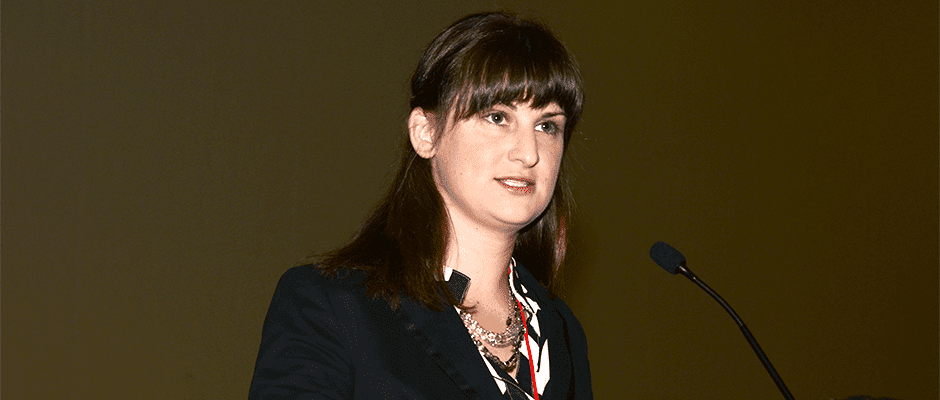Share this article
Plenary speakers look to future wildlife concerns
At its 25th Annual Conference, The Wildlife Society is celebrating the conservation successes we’ve achieved, but that doesn’t mean the work is done.
As speakers took the stage at the Thursday plenary, they spoke to the challenges that lie ahead.
“We do have the ability to solve these crises,” said outgoing TWS President John McDonald. “And yet there are more challenges to come.”
Richard Dolbeer, a science advisor for USDA APHIS Wildlife Services, reminded the crowd of how far the country has come in the last half-century. In 1967, Cleveland’s Cuyahoga River caught fire — not for the first time — igniting the conservation movement.
Rachel Carson’s landmark environmental book Silent Spring had been published five years earlier, but while Dolbeer said it prompted him to give up becoming a doctor to pursue wildlife ecology, it was met with fierce resistance and failed to galvanize the public.
The burning Cuyahoga helped spur the public to action, Dolbeer said, and the results are evident.
“That’s what the Cuyahoga River looks like today,” he said, showing a photo of kayaks stacked along a vegetation-lined river — a far cry from a river in flames. It wasn’t just one river. The 1970s resulted in a flurry of environmental laws, including the Endangered Species Act, Clean Air Act and Clean Water Act, and wildlife rebounded, he said.
“So all is well with the environment, right?” Dolbeer asked. “Well, not quite.”
Challenges still confront the country, he said. Dolbeer said he worried about “a concerted effort at this time to dismantle or greatly weaken many of the regulations that were responsible for these successes. That is a grave mistake.”
At times becoming emotional, Dolbeer urged the audience that the United States should not lose the environmental protections it put in place. “The world at large needs stewardship of its natural resources more than ever,” he said. “America again needs to lead by example as we did 50 years ago when the Cuyahoga caught fire.”
Evelyn Merrill, professor in the department of biological sciences at the University of Alberta, stressed differences between the United States and Canada in environmental protection. In a country where environmental resources are mostly overseen by the provinces, the federal government has had a more limited role, she said. National parks are fewer. First Nations play a stronger role than tribes in the United States and the federal government plays a weaker role.
Canada’s equivalent of the Endangered Species Act, the Species at Risk Act, didn’t pass until 2002, and it was far more controversial, she said. But Canada has not denied the existence of climate change, she said.
“It would be impossible for us to do that,” Merrill said. “And it’s not just wildlife species like the polar bear and caribou. It is our own peoples that we hear the most: the loudest voices on climate change.”
Finding mitigation dollars has been a challenge, though, she said, and it will probably require working with industry. Conservation efforts will also require working with an increasingly diverse population as the country’s immigration grows.
“Those people are our future in terms of conserving wildlife,” she said.
Krysten Zummo-Strong, Farm Bill wildlife biologist for Pheasants Forever, Inc., spoke about conservation challenges facing young people — “the global generation,” she said.
“Scientists are being accused of being biased, while ‘alternative facts’ — in air quotes — are being increasingly accepted,” Zummo-Strong said.
She spoke to the challenges facing conservation as more and more Americans live in urban areas, disconnected from nature. She urged biologists to work to balance conservation with the needs of agriculture.
“As a Farm Bill biologist, I work closely with agricultural producers on a daily basis and I’ve learned about how their needs and my goals are closely aligned,” she said.
And she urged biologists to do a better job of communicating science to ordinary people.
“When we as scientists can change the way in which we respond to the public, the way in which the public response to us will also change,” she said. “Respect and trust in science has moved us through the age of industrialization and can continue to move us into the future if we can remember that respect and trust go both ways.”
The plenary laid the groundwork for next year’s annual conference, shared with the American Fisheries Society in Reno, Nevada, where incoming President Darren Miller announced the theme would be communicating a conservation message.
“Connecting society on sustainable use of wildlife and fish resources, key conservation tools for both are wildly misunderstood by the public and misrepresented in the media,” Miller said.
Miller said he also hopes “to take conservation to underrepresented groups in society.”
Several awards were also presented:
Wildlife Publication Award – Book: Clark E. Adams
Wildlife Publication Award – Edited Book: Clint W. Boal, David A. Haukos
Wildlife Publication Award – Article: Clayton T. Lamb, Garth Mowat, Bruce McLellan, Scott Nielson, Stan Boutin
Wildlife Publication Award – Monograph: L. Scott Baggett, Benjamin J. Bird, Curtis H. Flather, Carrie Lambert, Jeffrey S. Lambert, Richard T. Reynolds, Shelley Bayard de Volo, Gary C. White








